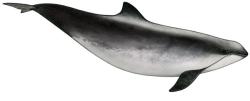Discussion
The dinner-bell effect and fish preference tests on grey seals

No dinner-bell effect on grey seals was found in this study with either the Banana or “Seal-safe” pinger. This supports the conception that both pingers were inaudible to the grey seals and is also in line with earlier results from tests with the Banana pinger. A pinger inaudible to seals, i.e. with no possibility for a dinner-bell effect, is of great importance to the fishermen since they have been reluctant to use pingers, inter alia due to the attraction of seals.
However, more studies are needed on the dinner-bell effect since only few fishes were taken in this study, making safe conclusions impossible. If the phones would have worked that might have given useful results. Instead of if a fish was taken I then could have compared the time it took for the seals to find the different pingers.
A reason why only so few fish were taken could be the fact that we used dead fish. Wild seals probably prefer live fish since that is what they are used to. Previous studies have also shown that live fish attracts more seals than dead fish. I would therefor suggest the use live fish as bait, protected in cod pots, for future studies. This could also have affected the fish preference study.
Another reason could be that the seals did not get enough time to learn that the pinger sound meant fish, if they heard it. There are mostly small-scale fishing boats in Nävekvarn were the study was conducted so maybe the seals had never or rarely heard a pinger.
The pinger deterrent effect on harbour porpoises

This study also shows that the Banana pinger has a clear deterrent effect on harbour porpoises. This is also in line with earlier studies on pingers that e.g. have found that nets with a Banana pinger reduced the chance of bycatch with 82 %.
A great concern is that the porpoises will habituate to the sound of a pinger which thus would reduce or even eliminate the deterrent effect, leading to more bycatch again. Several studies have tested different pingers with varying results in habituation. The main reason it differs between pingers is depending on if the pinger emits multi-harmonic sounds containing a series of frequencies in a random order, like the Banana pinger, or if it only emits the same frequency with the same interval in between each ping, like older pingers. The studies result also depends on if the pinger is tested continously or with ON/OFF intervals. The latter is more like how it would be in fisheries that uses pingers. In my study I had a pinger that emits multi-harmonic sounds set on a 30 hour ON/OFF cycle for 67 days and found no evidence of habituation. This is in line with previous studies over a longer time than the present study.
Twenty years ago there were some arguments that adding more noise, including pinger sounds, in the ocean should always be avoided and instead other ways than pingers to mitigate bycatch of large marine mammals should be found. Some tests with acoustically enhanced nets have been done, these nets increase the detectability for harbour porpoises and have proven to reduce bycatch significantly. However, unfortunately the catch of fish also decreased significantly due to the stiffness of the net. So for now it seems that pingers are the best way to mitigate bycatch of porpoises in gillnets and if more fishermen use them (even in vessels under 12 m, which are not included in the EU regulation from 2004) it would hugely support the conservation of the endangered Baltic Sea subpopulation of the harbour porpoise.
More studies are of course needed on the new "Seal-safe" pinger and it would aslo be interesting with studies looking at how pingers can affect the daily rythm of a porpoise. I could only see that the activity differed slightly between the ON and OFF periods, but not why and how.
Responsible for this page:
Director of undergraduate studies Biology
Last updated:
06/04/18
